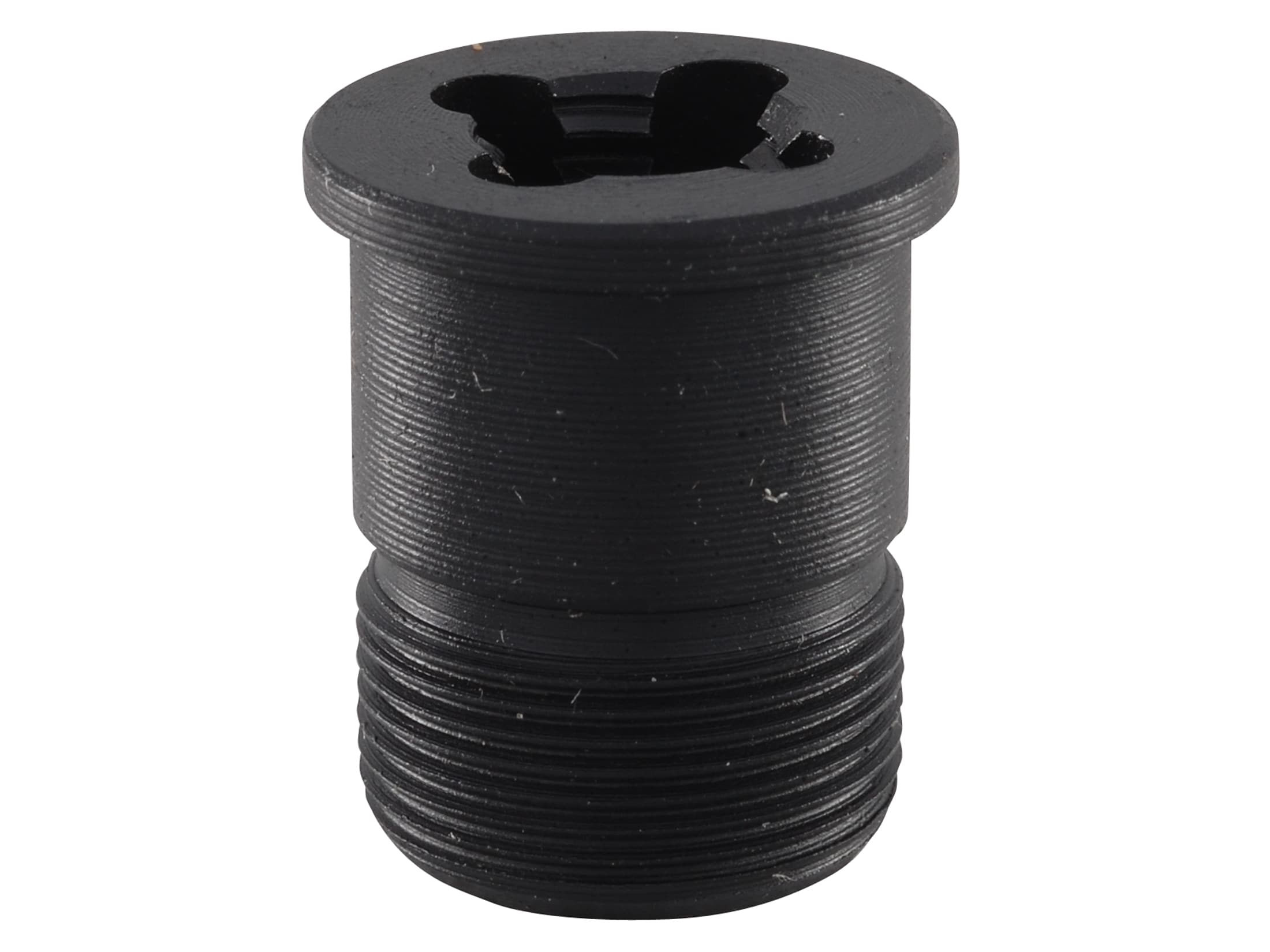Schuster DCM Adjustable Gas Plug with Wrench M1 Garand Steel Parkerized
Made from hardened tool steel and parkerized. Service rifle legal! Has the same appearance and configuration as original.
Made from hardened tool steel and parkerized. Service rifle legal! Has the same appearance and configuration as original; CMP 4th Edition #4-13-2-b. By adjusting the volume of gas in the cylinder you change the speed of the op-rod and the harmonics of the barrel. If you want to tame things down, it can be opened up just enough to function, or opened fully for single shot functionality. If you are working on your own hand loads, a quarter turn WILL affect group size. If you have a 308 Garand this is a necessity if you want to safely shoot heavier 168 grain match bullets. Also a must have if you hunt with your CMP Garand but want to shoot heavier 30-06 loads. This version has four gas ports and has a hollow locking setscrew in front of the original setscrew to keep the screws from vibrating loose. Includes instructions and the adjustment tool (Allen wrench). Made in the USA. Lifetime factory warranty.
Additional information
| Compatible With | M1 Garand |
|---|---|
| Shipping Weight | 0.080 Pounds |



by Tony
Easy to install. Easy to use.
by Bob
A number of ratings address the issues of how valuable this gas plug is. Being adjustable, you can tune your Garand to fire various commercial ammunition (although in my opinion, I’d stick with a round that’s approx. 150 gr/under 2900 fps at the muzzle). It adjusts easily, and takes only a few rounds to gain full function (allowing for rounds that exceed military ball—approx. 150 gr 2710 fps). This gas plug allows the operating rod to slow down, reducing speed and preventing damage. The only thing you might consider is buying a cylinder lock screw wrench, as this gas plug’s tool is for adjusting the set screw (not the plug itself). Yes, you can install and remove the plug with a screwdriver, but I think the low cost of a plug tool (about $13) makes it far easier to remove and/or install the gas plug. Yes there are other adjustable (and non adjustable) gas plugs, but for me, the Schuster is the easiest and most versatile.
by G-Man
I recommend this product for anyone who owns an M1 Garand. It allows you to make the gas flow adjustable. The Garand was designed to shoot M2 Ball ammo, which is becoming harder to find. So any time you want to shoot something other than M2 Ball ammo in your Garand, you risk having reliability issues or worse, damage your op rod. The Garand is a robust system, but I want mine to last as long as possible. The adjustable gas system allows you to safely experiment with modern hot 30-06 loads. This allows you to have a garand more powerful than an M1A, more powerful than a Hakim. And with some modification, to use bar mags. Yes I know, I’m a mad, mad scientist.
by Young
Bought this for the advertised purpose of shooting “modern” ammo through my recently acquired CMP M1 garand. Following the instructions it installs easily and only took four shots and four adjustments to get it to all work as it should. There are other products that do the same job without adjustment, but you have to be careful with hotter loads. This one can be adjusted to whatever you are shooting. Anyone with the slightest pit of mechanical ability can make this work well.
by Bob
Garands are hard on brass. Properly adjusted brass are not as beat up and good for more reloading and with the ammo situation today you can use hunting ammo without damage. A great product!
by Elmer
My initial application was tuning the gas system for M2 ball ammo. I was able to quickly adjust for reliable cycling, then adjusted a bit further to drop all the spent brass in a neat pile at 2:00. With the locking screw in place, it’s not compatible with the M5A1 bayonet. This product is easy to install, easy to adjust and works well. The instructions are clear.
by Richard
I purchased this for my CMP 308 converted M1 Garand rifle. My factory plug “blew out” and got lost in a field somewhere about 10 clips in. I installed this plug and left it open and catered it to my custom loads. It does exactly what it says and works awesome. I’m sure this will save my headache of finding ammo to work in it, and save my op rod from factory ammo if the need arises.
by Bob
This is cheap insurance to help protect your M1 from relatively overpowered loads. Unless you handload or use M1-specific rounds, most off the shelf 30-06 cartridges are loaded to excessive pressures for an M1 Garand.
by Hunter
Just what the doctor ordered. An adjustable gas plug for my M1 Garand. Easy to install and easy to adjust. Putting in the double set screw was a bit fiddly and is the one part that needs some more thought from the designer. The included allen wrench is questionable on being the “correct” size for the allen screws. For that I gave it 4/5 stars (I’d like to rate it 4.5 out of 5). Over all it does the job and does it correctly. I adjusted it 1/4 turn at a time as recommended and within 4 shots my Garand was cycling correctly. Out in the field, putting in that second set screw was fiddly and I was concerned about dropping it on the ground but I managed. Just do it over something so if you do drop it you can find it.